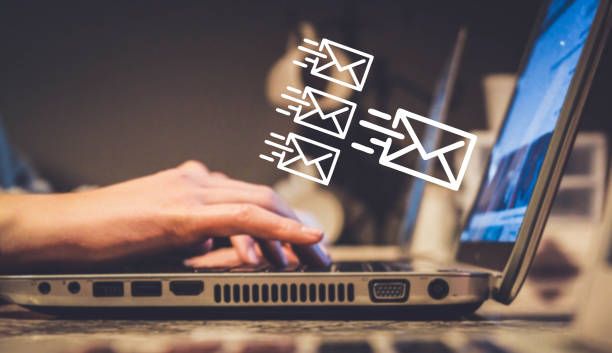Email bounce messages play a crucial role in email deliverability. When an email fails to reach its intended recipient, the recipient's mail server generates a bounce message to notify the sender about the delivery failure. These bounce messages provide valuable information about the reason for the bounce and offer insights into potential issues that need to be addressed. In this comprehensive guide, we will delve into email bounce messages, decipher their meanings, explore common bounce back examples, and provide expert strategies to overcome email deliverability challenges.
Understanding Email Bounce Messages

Email bounce messages, also known as bounce back messages or non-delivery reports (NDRs), are generated by mail servers to inform senders about the unsuccessful delivery of an email. These messages contain specific error codes, status messages, and additional information that help identify the cause of the bounce.
Types of Bounce Messages
Bounce messages can be categorized into several types based on the nature of the delivery failure. Here are some common bounce message examples and their meanings:
Hard Bounce
- "550 User unknown" or "550 Invalid recipient"
- Meaning: The recipient's email address is invalid, non-existent, or has been closed. This type of bounce is permanent and requires removing the email address from your mailing list.
Soft Bounce
- "450 Mailbox temporarily unavailable" or "421 Try again later"
- Meaning: The email could not be delivered temporarily due to issues like a full mailbox, a server being down, or content filtering. Soft bounces are usually temporary, and the server will attempt to deliver the email again.
Mailbox Full
- "552 Mailbox full" or "450 Mailbox quota exceeded"
- Meaning: The recipient's mailbox is full, and no more emails can be accepted. You can try sending the email again later or contact the recipient to resolve the issue.
Content Filtering
- "554 Message rejected for policy reasons" or "550 Message contains spam content"
- Meaning: The email has triggered the recipient's server's content filtering mechanism and is flagged as spam. Review your email content and ensure it complies with anti-spam policies to improve deliverability.
Interpreting Bounce Messages

To effectively interpret bounce messages, it's important to understand the components of a bounce message:
- Sender Information: Bounce messages typically include the sender's email address and name, allowing you to identify the source of the bounced email.
- Recipient Information: The bounce message provides details about the recipient's email address, allowing you to verify its accuracy and relevance.
- Error Codes: Bounce messages contain error codes, such as SMTP (Simple Mail Transfer Protocol) error codes, which provide specific information about the reason for the bounce. Understanding these codes can help diagnose and resolve delivery issues.
Strategies to Overcome Bounce Messages:
- Maintain a Clean Email List: Regularly clean and update your email list to remove invalid or inactive email addresses. Use email verification services to identify and remove problematic addresses proactively.
- Implement Double Opt-In: Implement a double opt-in process to ensure the accuracy of email addresses on your list. This process requires subscribers to confirm their email addresses, reducing the chances of incorrect or mistyped addresses causing bounces.
- Monitor and Analyze Bounce Rates: Keep a close eye on your bounce rates and analyze the reasons behind them. Identify patterns or recurring issues and take appropriate action to address them promptly.
- Improve Email Content and Relevance: Craft engaging and relevant email content to improve open rates and engagement. Personalize your messages and segment your audience to deliver targeted content that resonates with recipients.
- Maintain a Good Sender Reputation: Ensure compliance with email marketing regulations, such as the CAN-SPAM Act, and follow best practices to maintain a positive sender reputation. Minimize spam complaints, monitor blacklists, and use email authentication protocols like SPF, DKIM, and DMARC.
Conclusion
Decoding email bounce messages is essential for understanding the delivery issues faced by your email campaigns. By understanding the various types of bounce messages, interpreting their meanings, and implementing effective strategies, you can optimize email deliverability, improve engagement, and achieve better campaign results. Keep a pulse on your bounce rates, regularly analyze bounce messages, and adapt your email marketing practices to overcome deliverability challenges effectively.
FAQs
Q1: What should I do when I receive a bounce message?
When you receive a bounce message, review the error code and message to understand the reason for the bounce. Take appropriate action based on the bounce type. For hard bounces, remove the email address from your list. For soft bounces, monitor and resend the email later or investigate further if the issue persists.
Q2: How can I prevent emails from bouncing?
To prevent emails from bouncing, maintain a clean email list by regularly removing invalid or inactive addresses. Implement a double opt-in process, personalize your emails, and monitor your bounce rates. Comply with email marketing regulations, improve content relevance, and maintain a good sender reputation.
Q3: Can I still deliver emails if I receive bounce messages?
While bounce messages indicate delivery failures, it doesn't mean all future emails will bounce. By addressing the issues identified in bounce messages and implementing effective strategies, you can improve deliverability and increase the chances of successful email delivery.
Q4: Are bounce messages always accurate?
Bounce messages provide insights into the delivery status of an email, but they may not always be 100% accurate. Some mail servers may generate generic bounce messages or provide limited details. However, bounce messages remain valuable indicators of delivery issues and help guide troubleshooting efforts.
Q5: How often should I monitor bounce rates?
It's recommended to monitor bounce rates regularly to identify trends, patterns, and potential issues. Depending on the volume of your email campaigns, weekly or monthly monitoring can provide valuable insights into the health of your email deliverability.
By mastering the art of interpreting email bounce messages and taking proactive measures to address delivery challenges, you can optimize your email campaigns, increase deliverability, and achieve better engagement with your audience. Stay informed, adapt your strategies, and witness improved results in your email marketing endeavors.

